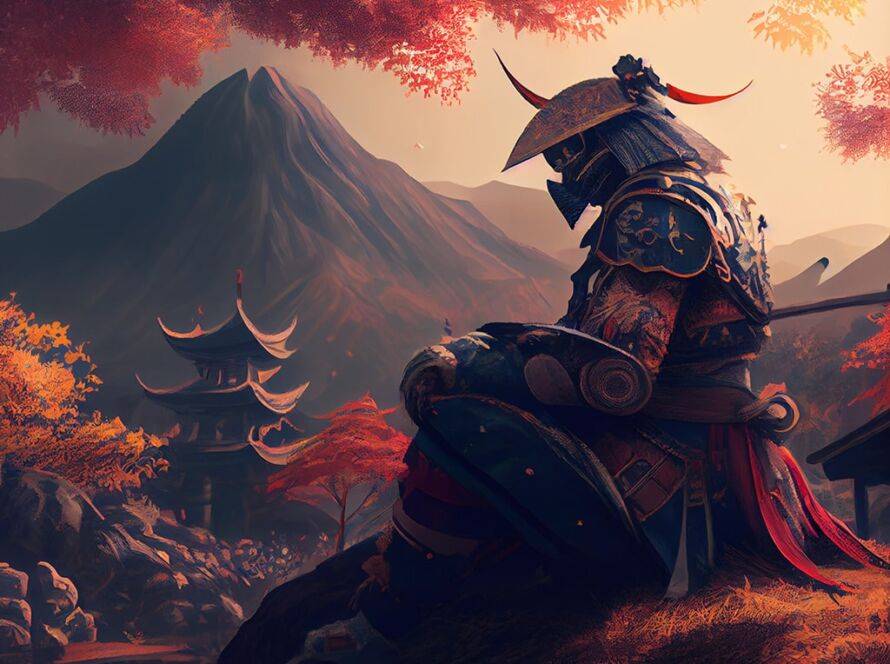The Importance of AI-Generated Artistry: Deciphering the Sophisticated World of Generative Artificial Intelligence
The realm of Generative AI, while nuanced and intricate, operates at the core of advanced technologies such as ChatGPT. It fundamentally employs software to comb the digital domain for an array of data, comprising art, imagery, and text. Consequently, the AI gleans knowledge from these human-generated constructs, amalgamating them into a manifestation hitherto unimagined.
However, the human creative force is launching a counteroffensive.
The realm of Artificial Intelligence (AI) has witnessed exponential growth and the art world is no outlier to its influence. AI art, the application of machine learning algorithms and other AI technologies to generate artistic creations, is a relatively nascent yet burgeoning field. The potential it holds for unfettered creativity and innovation is immense.
Nevertheless, there exists a conundrum; AI’s utilization of artists’ and photographers’ work during its training phase is contentious.
Thus, AI art, while intriguing, resides in murky waters.
The absence of attribution stirs a predicament.
It is no surprise, then, that potential retribution is on the horizon.
Indeed, the signs of such a development are already surfacing.
Headlines Today: Tech Giants in Legal Crosshairs Over Alleged Copyright Infringements
Tech powerhouses Microsoft, GitHub, and OpenAI find themselves at the epicentre of a class action lawsuit, accused of breaching copyright laws. The bone of contention stems from Copilot, an AI code-generating system. This intelligent system, having trained on billions of lines of public code, is alleged to reproduce licensed code segments sans requisite credit.
The Intricacies of AI Art Explained:
The realm of AI artistry takes shape through algorithms trained to discern patterns and formulate original content based on these identified patterns.
This artistic frontier encapsulates several variations:
- Generative art employs algorithms to craft an infinite array of unique images, essentially an AI reiteration of original works.
- Interactive art utilizes sensors and other technologies, enabling spectators to engage directly with the artistic creation.
One of the most salient advantages of AI artistry is its potential to unlock untrodden creative pathways, otherwise deemed unattainable. By harnessing the formidable capabilities of machine learning and other AI technologies, artists are empowered to create utterly unique and trailblazing artworks.
This newfound avenue holds a particular allure for artists eager to break the chains of conventional artistic norms, inviting them to explore fresh modalities of self-expression.
The 4 best AI art tools
Engineered by the creative minds at Google, Deep Dream employs a neural network to produce images that exude a surreal, oneiric quality.
End-users are bestowed the ability to select a foundational image, further refining assorted parameters to craft distinctive and original visual expressions.


– ArtBreeder
ArtBreeder, an innovative platform, avails its users the capacity to construct an extensive assortment of bespoke illustrations, guided by an assortment of algorithmic methodologies.
It further endows participants with the creative freedom to intermix diverse visuals and stylistic interpretations, thereby allowing them to fabricate works of art that truly break new ground in originality.


– NeuralStyler
This robust utility gives users the authoritative capability to morph the style from one image and graft it onto another, consequently birthing a standalone, authentic art piece.
Users are handed the reins with a diverse selection of styles at their fingertips and a range of adjustable parameters that empower them to precision-engineer their artwork. Harness this power and watch as you create unparalleled artistry that bears your signature style.


– RunwayML
This proficient apparatus presents artists with the prospect to rigorously experiment with a comprehensive array of distinct AI algorithms, inclusive of generative models, image recognition frameworks, and natural language processing methodologies.
Users find themselves in a position to manifest interactive installations, construct generative music, and venture far beyond these conventional confines.
With the aid of AI, they possess the capacity to transform any visual, short video sequence, or textual prompt into a compelling cinematic presentation. This gravitas-filled ability to convert rudimentary inputs into captivating film pieces is a testament to the seriousness and impact of this technological tool.
The future of art
As the AI technological realm continues to evolve at a robust pace, the art landscape’s horizon radiates promising potential. Here are a few ways that AI is predicted to carve the future of art:
Unveiling Fresh Creative Horizons
As AI technology refines its complexity, it will reveal previously hidden creative opportunities for artists. The capability to spawn wholly unique and original art pieces will pave the way for artists to probe artistic pathways previously deemed unreachable.
The Emergence of Interactive
Art Interactive art has firmly planted its roots as a favoured genre of AI-crafted art, a trend that shows little sign of abating. Utilising sensors and other technological instruments, artists can manifest artwork that reacts to the observer’s movements, crafting an immersive experience that grips the viewer.
A New Era of Personalization
As AI technology permeates society more broadly, artists will find it increasingly feasible to tailor their artwork to the unique viewer. Harnessing the power of data analytics and other AI-powered tools, artists can tailor art to align with the viewer’s preferences, leading to a profoundly personal and poignant encounter.
Global Collaboration in Art
The potential of AI technology extends to fostering collaborative art projects on an international scale. Equipped with the power to connect artists scattered across the globe, AI can streamline collaboration, enabling the creation of groundbreaking works of art that truly shatter conventional boundaries.

In Conclusion
The sphere of AI art is a dynamically transforming realm, poised to reshape the traditional understanding of the art world. Utilizing the might of machine learning and various AI technologies, artists have the potential to conceive artwork that is unparalleled, pioneering, and absolutely awe-inspiring.
As the march of AI technology forges ahead, anticipation mounts over how artists will harness this potent tool. There is keen interest to witness the confluence of human creativity and advanced tech, as they continue their exploratory dance, sketching the contours of a potentially revolutionary artistic future.



